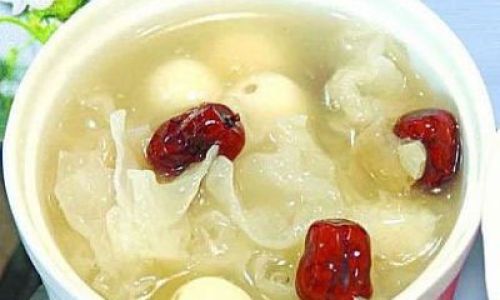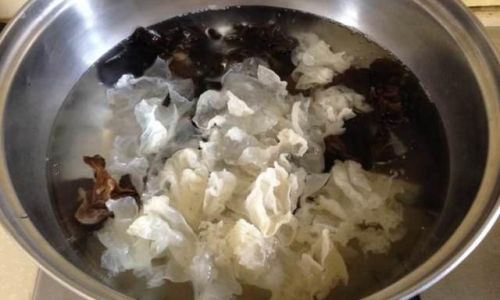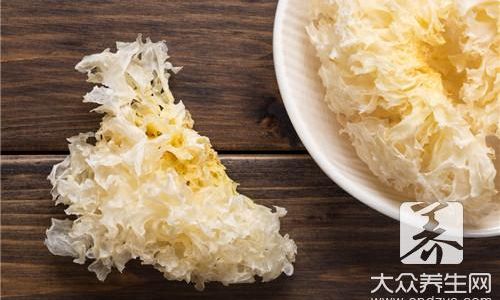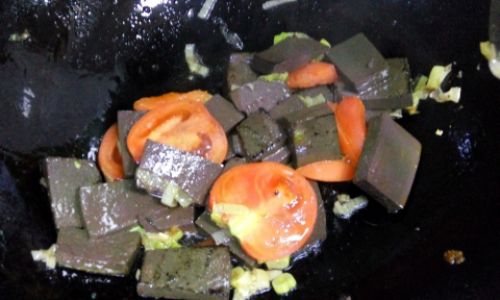Introduction

Tremella fuciformis, commonly known as white fungus or silver ear fungus, is a type of edible mushroom that has been valued in traditional Chinese medicine and cuisine for centuries. Renowned for its gelatinous texture and mild flavor, tremella fuciformis is often used in soups, desserts, and various health tonics. Its nutritional profile, rich in polysaccharides, vitamins, and minerals, contributes to its reputation as a superfood that promotes skin health, enhances immune function, and supports overall well-being.
However, like many perishable foods, tremella fuciformis can undergo changes over time, particularly in color. Observing your once pristine white tremella fuciformis turning yellow may raise concerns about its safety for consumption. This article delves into the reasons behind this discoloration, the implications for food safety, and whether it is advisable to consume yellowed tremella fuciformis.
Understanding Tremella Fuciformis and Its Storage
Before addressing the discoloration issue, it is crucial to understand the basic characteristics and storage requirements of tremella fuciformis. This edible mushroom is typically sold in dried form, which extends its shelf life significantly. Dried tremella fuciformis should be stored in a cool, dark, and dry place to preserve its quality and prevent moisture-induced spoilage.
When properly stored, dried tremella fuciformis can retain its white color and freshness for several months to a year. However, improper storage conditions, such as exposure to moisture, heat, or direct sunlight, can accelerate the degradation process. These environmental factors can lead to chemical and physical changes within the mushroom, manifesting as discoloration, loss of texture, and potential microbial growth.
The Science Behind Discoloration
Discoloration in tremella fuciformis, particularly turning yellow, is a complex phenomenon involving multiple factors. Here are some of the primary reasons why tremella fuciformis may change color over time:
-
Oxidation: Exposure to oxygen can cause oxidative reactions within the mushroom’s cellular structures. These reactions can lead to the formation of brown or yellow pigments, altering the original white color. Oxidation is a natural process that occurs more rapidly in the presence of light, heat, and moisture.
-
Enzymatic Browning: Like many plant-based foods, tremella fuciformis contains enzymes that can catalyze browning reactions. When the mushroom’s cells are damaged, enzymes such as polyphenol oxidase (PPO) and peroxidase (POD) are released, catalyzing the oxidation of phenolic compounds into brown or yellow pigments. This enzymatic browning is often accelerated by exposure to oxygen and can be minimized through blanching or other processing techniques.
-
Microbial Activity: The presence of microorganisms, such as bacteria and fungi, can also contribute to discoloration. These microorganisms can produce pigments as they metabolize the mushroom’s nutrients, leading to visible changes in color. Microbial growth is more likely in damp or humid conditions, where moisture provides an ideal environment for microbial proliferation.

-
Chemical Degradation: Over time, the chemical components of tremella fuciformis can undergo degradation, leading to changes in color, texture, and flavor. This degradation is a natural part of the aging process but can be accelerated by environmental factors such as heat, light, and oxygen exposure.
Assessing the Safety of Yellowed Tremella Fuciformis
Determining whether yellowed tremella fuciformis is safe to eat involves considering several factors, including the extent of discoloration, the presence of off odors or flavors, and the overall condition of the mushroom. Here are some guidelines to help you make an informed decision:
-
Extent of Discoloration: Mild yellowing confined to the surface may be a sign of minor oxidative or enzymatic changes. In such cases, the interior of the mushroom may still be safe to consume if it retains its original color and texture. However, extensive yellowing or discoloration that extends into the mushroom’s interior is a more serious indication of degradation and potential microbial growth.
-
Presence of Off Odors or Flavors: If your tremella fuciformis has developed an unpleasant odor or flavor, it is likely unsafe for consumption. These sensory changes are often indicative of microbial contamination or chemical degradation that has compromised the mushroom’s quality and safety.
-
Texture and Moisture Content: A change in texture, such as becoming softer or more brittle, can indicate moisture loss or absorption, which can promote microbial growth. If the mushroom feels damp or sticky, it is likely exposed to moisture and may have developed harmful microorganisms.
-
Storage Conditions: Reflect on the storage conditions of your tremella fuciformis. If it has been exposed to heat, light, or moisture for extended periods, the risk of degradation and contamination increases. Properly stored mushrooms, on the other hand, are less likely to undergo significant changes.
Recommendations for Safe Consumption
To minimize the risk of consuming unsafe tremella fuciformis, follow these recommendations:
-
Proper Storage: Ensure that your tremella fuciformis is stored in a cool, dark, and dry place. Airtight containers or vacuum-sealed packaging can help protect the mushroom from oxygen, light, and moisture.

-
Inspection Before Use: Always inspect your tremella fuciformis before use. Look for signs of discoloration, moisture, off odors, or flavors. If any of these indicators are present, discard the mushroom to avoid potential health risks.
-
Prompt Use: Once opened, use your tremella fuciformis within a reasonable timeframe to minimize exposure to environmental factors that can cause degradation.
-
Cooking Practices: Proper cooking can help reduce the risk associated with consuming slightly degraded tremella fuciformis. Cooking at high temperatures can kill harmful microorganisms and improve the overall safety of the mushroom.
Conclusion
In conclusion, the discoloration of tremella fuciformis, particularly turning yellow, is a complex phenomenon influenced by multiple factors, including oxidation, enzymatic browning, microbial activity, and chemical degradation. While mild surface yellowing may not necessarily indicate unsafe consumption, extensive discoloration, off odors, or flavors, and changes in texture are strong indicators that the mushroom has undergone significant degradation and may pose health risks.
To ensure the safety of your tremella fuciformis, prioritize proper storage conditions, regularly inspect the mushroom for signs of degradation, and use it promptly after opening. By following these guidelines, you can maximize the shelf life and safety of your tremella fuciformis, enjoying its nutritional benefits without compromising your health.
Remember, when in doubt, err on the side of caution and discard any tremella fuciformis that shows signs of spoilage. Your health and safety are paramount, and it is always better to be safe than sorry when it comes to consuming perishable foods.
In the broader context of food safety, understanding the factors that contribute to the discoloration of tremella fuciformis can also inform your choices when purchasing and storing other perishable foods. By applying similar principles of proper storage, regular inspection, and prompt use, you can help ensure the safety and quality of your entire food supply.
Ultimately, the decision to consume yellowed tremella fuciformis should be based on a careful assessment of its condition and your understanding of food safety principles. By making informed choices, you can continue to enjoy the nutritional benefits of this ancient superfood while minimizing the risks associated with its consumption.





0 comments